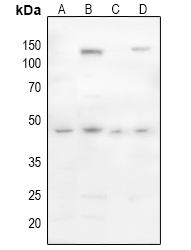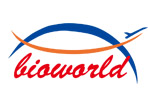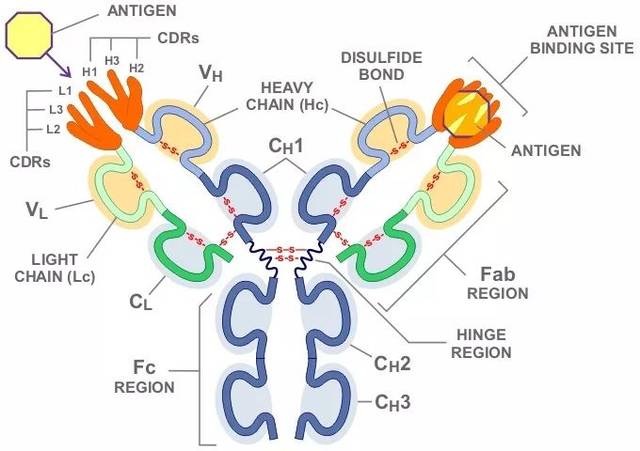Product Name :
CD142 (Phospho-S290) polyclonal antibody Background :
Hemostasis following tissue injury involves the deployment of essential plasma procoagulants (Prothrombin and Factors X, IX, V and VIII), which are involved in a blood coagulation cascade leading to the formation of insoluble Fibrin clots and the promotion of platelet aggregation. Coagulation Factor V (Factor V, FV, proaccelerin, labile factor) is a 2196 amino acid, single chain glycoprotein that is cleaved by Thrombin to yield an active, Ca2+-dependent dimer that is essential to the blood coagulation cascade. Together with catalytic Factor Xa and Ca2+ on the surface of platelets or endothelial cells, Factor Va coordinates into a Prothrombinase complex, which mediates proteolysis of Prothrombin into active Thrombin. Tissue factor (TF), also designated coagulation Factor III is a cell surface glycoprotein that enables cells to initiate blood coagulation cascades. It functions as a high-affinity receptor for coagulation Factor VII. Product :
Rabbit IgG, 1mg/ml in PBS with 0.02% sodium azide, 50% glycerol, pH7.2 Storage&Stability :
Store at 4°C short term. Aliquot and store at -20°C long term. Avoid freeze-thaw cycles. Specificity :
CD142 (Phospho-S290) polyclonal antibody detects endogenous levels of CD142 protein only when phosphorylated at Ser290. Immunogen :
Synthetic phosphopeptide derived from human CD142 around the phosphorylation site of Serine 290. Conjugate :
Unconjugated Modification :
Phosphorylation
CD142 (Phospho-S290) polyclonal antibody Background :
Hemostasis following tissue injury involves the deployment of essential plasma procoagulants (Prothrombin and Factors X, IX, V and VIII), which are involved in a blood coagulation cascade leading to the formation of insoluble Fibrin clots and the promotion of platelet aggregation. Coagulation Factor V (Factor V, FV, proaccelerin, labile factor) is a 2196 amino acid, single chain glycoprotein that is cleaved by Thrombin to yield an active, Ca2+-dependent dimer that is essential to the blood coagulation cascade. Together with catalytic Factor Xa and Ca2+ on the surface of platelets or endothelial cells, Factor Va coordinates into a Prothrombinase complex, which mediates proteolysis of Prothrombin into active Thrombin. Tissue factor (TF), also designated coagulation Factor III is a cell surface glycoprotein that enables cells to initiate blood coagulation cascades. It functions as a high-affinity receptor for coagulation Factor VII. Product :
Rabbit IgG, 1mg/ml in PBS with 0.02% sodium azide, 50% glycerol, pH7.2 Storage&Stability :
Store at 4°C short term. Aliquot and store at -20°C long term. Avoid freeze-thaw cycles. Specificity :
CD142 (Phospho-S290) polyclonal antibody detects endogenous levels of CD142 protein only when phosphorylated at Ser290. Immunogen :
Synthetic phosphopeptide derived from human CD142 around the phosphorylation site of Serine 290. Conjugate :
Unconjugated Modification :
Phosphorylation
-
 Western blot (WB) analysis of CD142 (Phospho-S290) polyclonal antibody at 1:500 dilution LaneA:The Brain tissue lysate of Mouse LaneB:The Lung tissue lysate of Mouse LaneC:The Liver tissue lysate of Mouse LaneD:The Liver tissue lysate of Rat
Western blot (WB) analysis of CD142 (Phospho-S290) polyclonal antibody at 1:500 dilution LaneA:The Brain tissue lysate of Mouse LaneB:The Lung tissue lysate of Mouse LaneC:The Liver tissue lysate of Mouse LaneD:The Liver tissue lysate of Rat
Bioworld Biotech only provide peptides for our antibodies and do not provide additional peptide customization services.
Price/Size :
USD 368/1mg/vial
Tips:
For phospho antibody, we provide phospho peptide(0.5mg) and non-phospho peptide(0.5mg).Describe :
Blocking peptides are peptides that bind specifically to the target antibody and block antibody binding. These peptide usually contains the epitope recognized by the antibody. Antibodies bound to the blocking peptide no longer bind to the epitope on the target protein. This mechanism is useful when non-specific binding is an issue, for example, in Western blotting (WB) and Immunohistochemistry (IHC). By comparing the staining from the blocked antibody versus the antibody alone, one can see which staining is specific; Specific binding will be absent from the western blot or IHC performed with the neutralized antibody.Formula:
Synthetic peptide was lyophilized with 100% acetonitrile and is supplied as a powder. Reconstitute with 0.1 ml DI water for a final concentration of 10 mg/ml.The purity is >90%,tested by HPLC and MS.
Storage:
The freeze-dried powder is more stable. For short time at 2-8°C. For long term storage store at -20°C.
Note :
This product is for research use only (RUO only). Not for use in diagnostic or therapeutic procedures.
 CD142 (Phospho-S290) polyclonal antibody
CD142 (Phospho-S290) polyclonal antibody  Datasheet
Datasheet COA
COA MSDS
MSDS SHIP
SHIP